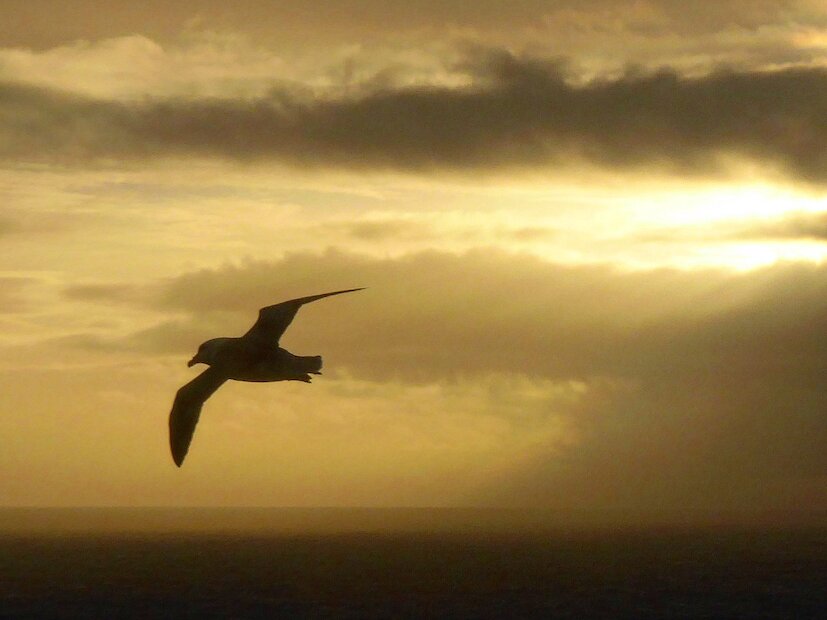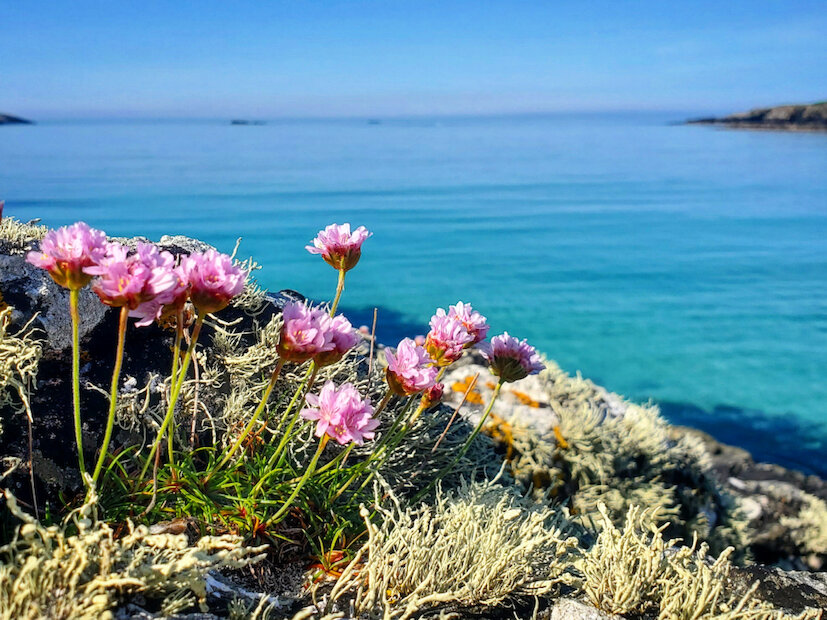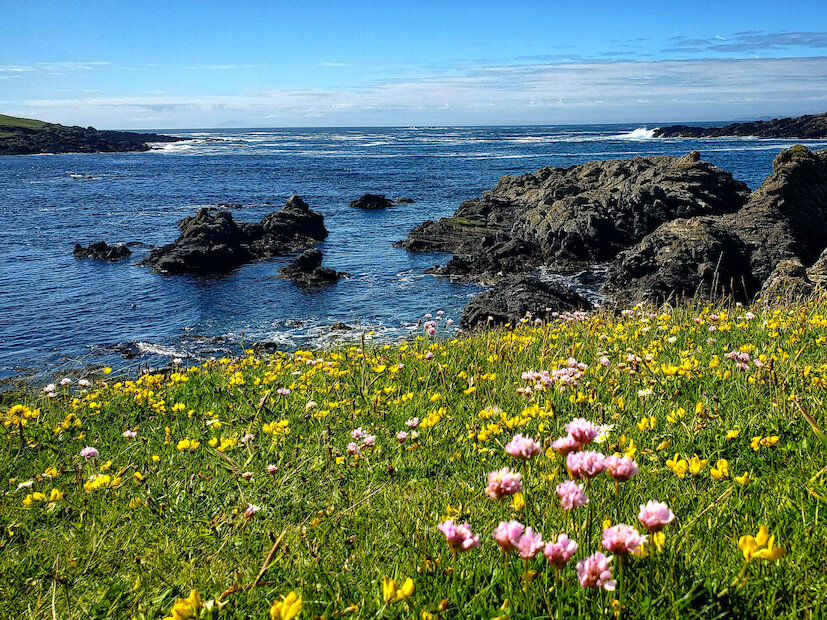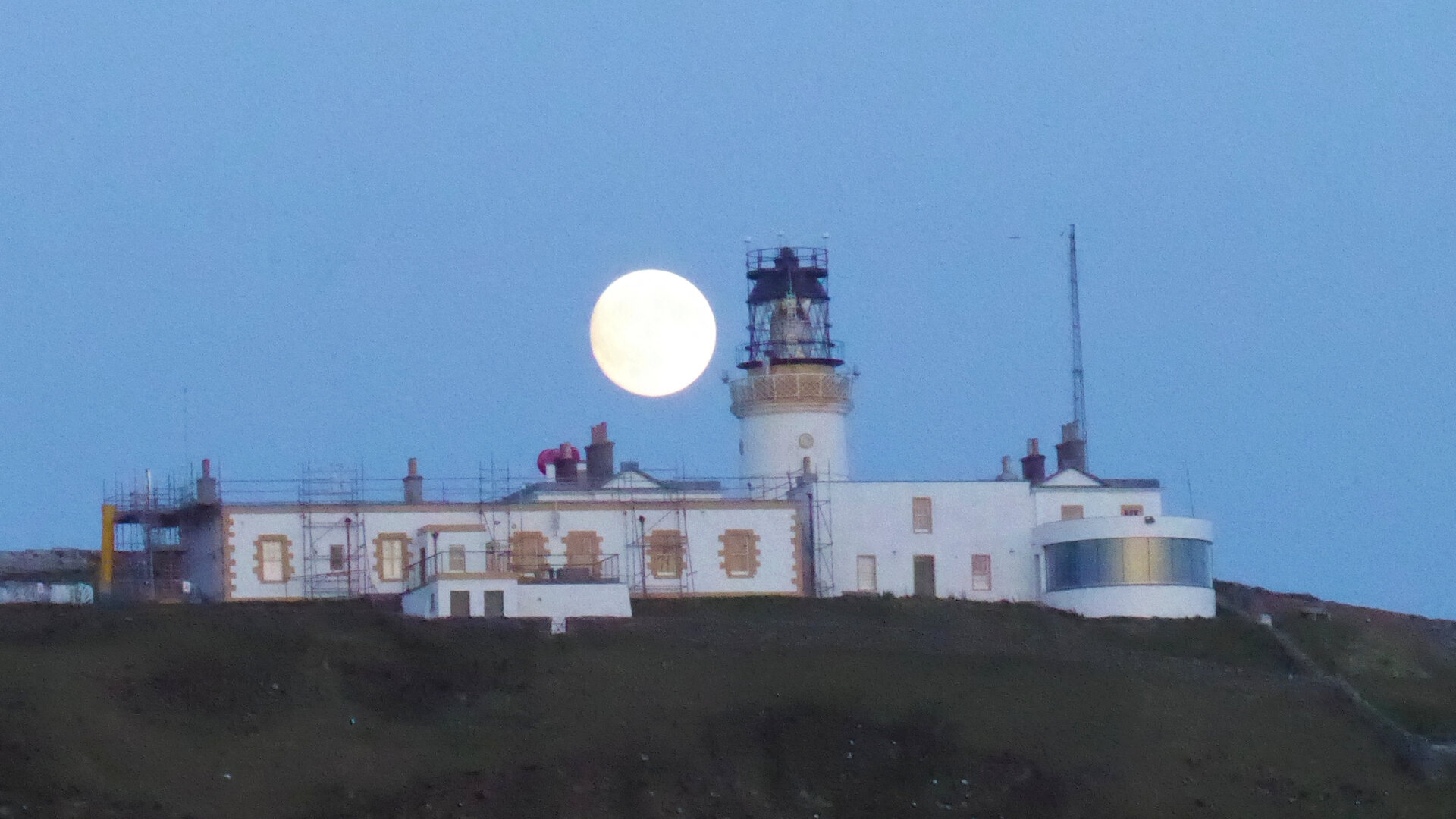I walked up the twisting road towards Sumburgh Lighthouse while fulmar glided on wings of wind, their bodies startlingly white against the blue sky. They circled, flying a little closer each time, their eyes fixed upon me. This curiosity that they seem to have for humans, has made them one of my favourite birds. But tonight, I was here for the puffins.
Watching Shetland's famous puffins is a treat that many locals enjoy each summer. As a tour guide, Catherine Munro gets to enjoy the colourful birds more than most. It's an experience that she never tires of...
It has become something of a ritual for me, to take a moment to welcome summer by visiting the puffins at Sumburgh Head.
I wait until a few days after the first sighting in mid-April heralds their return and then choose a sunny evening and go to the cliffs.
It's a location which I visit regularly with people. As a tour guide, I love helping visitors experience the wonder of the seabird cliffs and the incredible history of the lighthouse.
Check out the Sumburgh Head website to discover more about the visitor centre and lighthouse, including opening times. It is one of my children’s favourite places and I spend many happy days immersed in the noisy chaos of their summer adventures.
But for my first visit of the season , I always go alone.
I walk slowly, stopping at the places I usually see them. The sandstone cliffs, weathered with ledges and crevices are the perfect home for seabirds as they spend these few summer months ashore to raise their chicks. Their strategy of gathering together, safety in numbers, provides us with an opportunity to share in these moments of their lives.
The arrangement of birds is often described as being like an apartment block, with each species having their preferred place. The lower levels close to the water are favoured by guillemots and razorbills, the middle populated with fulmar and kittiwake.
Puffins nest in burrows, often converted rabbit holes, and so they choose locations in the grassy areas near the cliff tops.
Early in the season the grass remains bare, a faded green after a long winter, but soon the colours return. Tiny spots of purple where spring squill blooms, bright yellow birds foot trefoil and an abundance of pink thrift.
As the birds return, the air fills with their calls echoing between sea, cliff and sky.
The sun started to dip closer to the horizon, shadows lengthening. I walked behind the lighthouse, following the line of a lichen covered wall. A Shetland wren perched, singing. I am always amazed by the power of their voices, a sound disproportionate to their tiny size, loud enough to be heard over the sound of wind and sea.
I watched as puffins moved all around me, the sunshine, wind and details of their lives absorbing me, all mundane worried transformed by the magic of these first moments of a Shetland summer.
Looking over the wall I saw a single puffin, the white of its body gilded gold from the light of the setting sun. After a few minutes another landed beside it. They stood appearing to ignore each other for some time before beginning a beak dance, where they noisily clattered their bills together.
This ritual is part of how pairs re-establish their bond after a winter apart. Another puffin emerged from a burrow and began tearing out blades of dry grass, filling its beak with this nesting material before disappearing underground once more.
I watched as puffins moved all around me, the sunshine, wind and details of their lives absorbing me, all mundane worried transformed by the magic of these first moments of a Shetland summer.
Check out our comprehensive guide to the best places for bird watching in Shetland.






